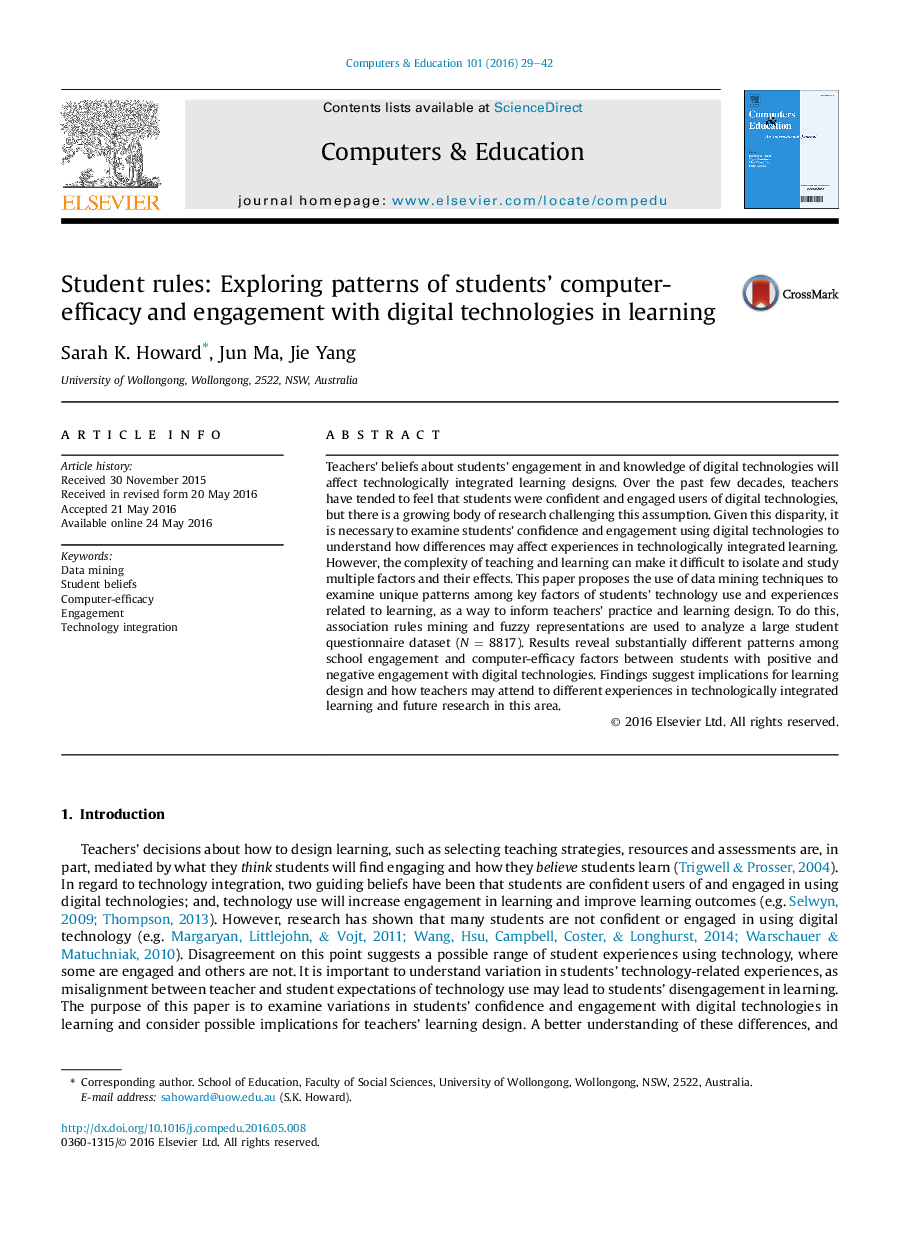| Article ID | Journal | Published Year | Pages | File Type |
|---|---|---|---|---|
| 348161 | Computers & Education | 2016 | 14 Pages |
•A better understanding of student experiences in technologically integrated learning is needed.•Use of data mining techniques to uncover unique patterns among factors of technology integration.•Results show different patterns among students’ confidence and engagement in technology use.•More complex patterns were observed in students with negative engagement in technology use.•Results raise questions regarding how digital technologies are integrated in learning design.
Teachers’ beliefs about students’ engagement in and knowledge of digital technologies will affect technologically integrated learning designs. Over the past few decades, teachers have tended to feel that students were confident and engaged users of digital technologies, but there is a growing body of research challenging this assumption. Given this disparity, it is necessary to examine students’ confidence and engagement using digital technologies to understand how differences may affect experiences in technologically integrated learning. However, the complexity of teaching and learning can make it difficult to isolate and study multiple factors and their effects. This paper proposes the use of data mining techniques to examine unique patterns among key factors of students’ technology use and experiences related to learning, as a way to inform teachers’ practice and learning design. To do this, association rules mining and fuzzy representations are used to analyze a large student questionnaire dataset (N = 8817). Results reveal substantially different patterns among school engagement and computer-efficacy factors between students with positive and negative engagement with digital technologies. Findings suggest implications for learning design and how teachers may attend to different experiences in technologically integrated learning and future research in this area.
